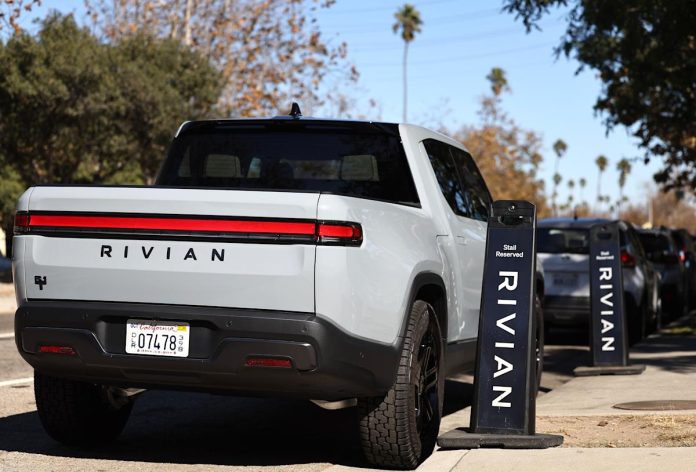Rivian (RIVN) will report second quarter earnings after the bell on Tuesday, as the pure-play EV-maker builds the case towards eventual profitability, while navigating the minefields of President Trump’s auto sector tariffs and removal of EV tax credits.
For the quarter, Rivian is expected to report revenue of $1.28 billion per Bloomberg consensus estimates, and higher than the $1.158 billion reported a year ago. The company is expected to post an adjusted EPS loss of $0.63, with an adjusted EBITDA (earnings before interest, taxes, depreciation, and amortization) loss of $493 million.
Last quarter the company reported its second consecutive quarter of gross profit, hitting $206 million. Despite this, issues like trade policy and tariffs meant the maintained its 2025 full-year adjusted EBITDA loss projection in a range of $1.7 billion to $1.9 billion. Tariffs on auto parts currently stand at 25%, though USMCA compliant parts are exempt.
Federal EV tax credits expiring at the end of September will likely hurt Rivian’s ability to scale up sales and generate more gross profit.
The company said in early July it produced 5,979 vehicles at its Normal, Illinois, factory and delivered 10,661 vehicles during the second quarter, which was slightly below 10,800 analysts’ consensus. Production was limited during the quarter in preparation for model year 2026 vehicles expected to launch later this month, the company said.
Rivian reaffirmed its 2025 delivery guidance range of 40,000 to 46,000 vehicles, though this is below the company’s original 2025 target of deliveries between 46,000 and 51,000.
The loss of the federal $7,500 federal tax credit may impact its delivery and EBITDA loss forecast, though it may pull forward sales in Q3 leading to a strong sales quarter.
The development of Rivian’s upcoming R2 midsize crossover will be a big focus in Rivian’s report and the following analyst conference call.
“On the call, we’ll be looking for further detail on Rivian’s progress with its Volkswagen Joint Venture (total deal size of ~$5.8B), and on the company’s progress towards autonomy, and towards commercializing its R2 line, which is slated for SOP [start of production] in 1H26,” wrote Cantor Fitzgerald analyst Andres Sheppard.
Deutsche Bank’s Edison Yu adds that R2 prototypes have been seen in the wild, further suggesting 2026 production is in the cards, but there are still headwinds for the business overall.
“Heading into 2H, we worry that EV policy headwinds could keep a lid on the stock. Moreover, the company is expected to experience some downtime related to R2, hurting overhead absorption,” he wrote in late July.

